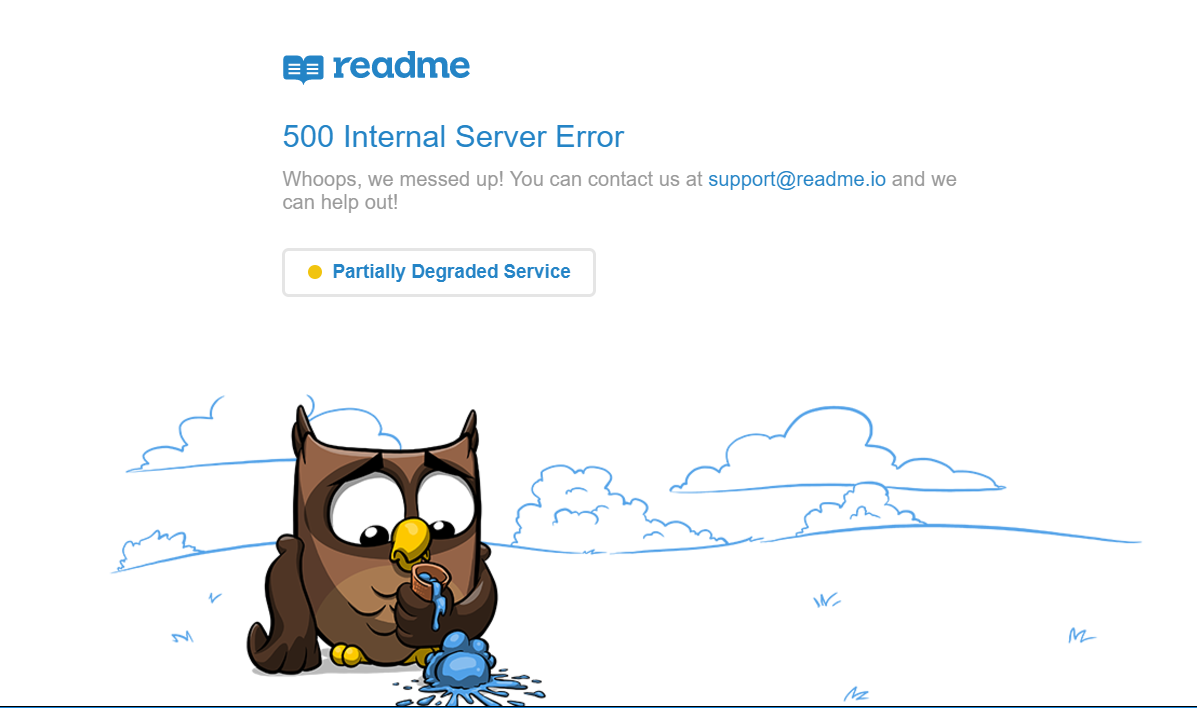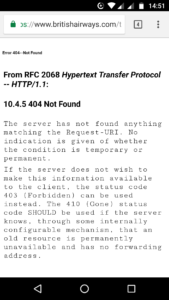One of the most basic of elements of overall user experience is the one that’s most often forgotten and that is: handling website errors, especially the two classics ‘page not found’ (404 errors), and server errors (500 errors).
There are so many sites with great examples of 404 error pages. But any kind of meaningful error page is essential.
Think back to the BA IT system meltdown in May 2017. This was the page the user got at the height of the issue:
Now I understand this was an almost unprecedented situation: someone had turned off the power switch (happens to me all the time), but a little 404 or 500 page would have gone a long way… If nothing else, reassure your visitors in the case of a server error: something along the lines of ‘sorry, we’re working feverishly in the background and we’ll be back soon!’
In the case of a 404 error – point the user back to the home page, or a search page, or a site map. Anywhere – just don’t leave them hanging. Give them another chance to be drawn into your site; don’t make the only option the back button. Better still, do all you can to help the user let you know a page hasn’t been found – it’s to your advantage to know you’ve got a problem with your site, after all. Error Handling is part of the user experience.

